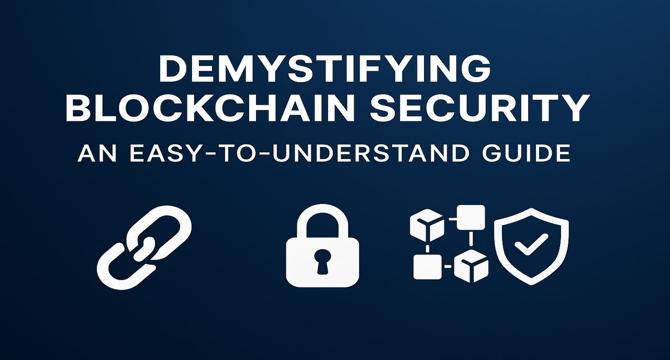Software News
TheNewsCrypto
312

SpoonOS Partners with Supernet to Power Trustless, Decentralized AI with Optimized LLM Integration
- SpoonOS partners with Supernet to power trustless, decentralized AI with optimized LLM integration.
- SpoonOS collaborates with Supernet to utilize LLMs for intelligent decision-making in AI and optimize the execution of Web3-specific, fine-tuned LLMs.
- Supernet, a Layer 1 blockchain, enables decentralized and verifiable intelligence with features like Super Agent, Deferred Transactions, Decentralized Data Engine, Composable AI Stack, and privacy-preserving computing.
- The partnership aims to integrate Supernet's optimized LLM into SpoonOS, leverage the future LLM Marketplace, and advance decentralized AI for trustless applications.
Read Full Article
18 Likes
Medium
1.5k

Image Credit: Medium
10 Outdated Python Modules That You Should Never Use Again
- Outdated Python modules can lead to bugs, security issues, and inefficiencies.
- Here are 10 outdated Python modules along with their modern alternatives to help you improve your code.
- For example, the 'os.system' module is outdated and clunky; use 'subprocess' module instead for better clarity and power.
- Upgrading to modern alternatives will ensure your code is robust, efficient, and safe.
Read Full Article
25 Likes
Tech Radar
13

Image Credit: Tech Radar
Microsoft has a big new AI settings upgrade for Windows 11 on Copilot+ PCs – plus 3 other nifty tricks
- Microsoft introduces new AI settings upgrade for Copilot+ PCs on Windows 11, enabling AI to adjust OS settings.
- AI agent in Settings panel allows natural language queries for easy customization like adjusting mouse pointer size.
- The AI can make recommendations for settings adjustments to streamline user experience. Microsoft aims to simplify tweaking Windows 11 settings.
- The feature is currently in testing and starts with Snapdragon X chips before expanding to AMD or Intel processors.
- Other enhancements for Copilot+ PCs include dynamic lighting controls in Photos app for image enhancement using AI.
- Snipping Tool gets 'Perfect Screenshot' feature where AI helps frame and crop screenshots efficiently.
- Narrator in Windows 11 now offers rich image descriptions for better accessibility for blind or low-vision users.
- These AI-driven features are currently in testing, enhancing user experience and accessibility on Windows 11.
- Microsoft's focus on adding AI capabilities to Copilot+ PCs aims to improve productivity and user interaction with the OS.
- Upcoming enhancements to Windows 11 include tools to optimize image editing, screenshot capture, and accessibility for diverse users.
Read Full Article
Like
Javacodegeeks
316

Image Credit: Javacodegeeks
Micronaut Flyway Database Schema Migrations Example
- Micronaut Flyway Database Schema Migrations provide a reliable solution for managing database schema changes in microservices architecture.
- Micronaut is a JVM-based framework designed for building high-performance microservices and cloud-native applications.
- Unlike traditional Java frameworks, Micronaut uses compile-time annotation processing for better performance.
- Flyway is an open-source tool for version controlling database schemas, integrated with Micronaut.
- Flyway executes migration scripts in a consistent order to update the database schema.
- To use Flyway in a Micronaut project with PostgreSQL, Docker can be utilized to set up the database instance.
- Dependencies for Flyway and PostgreSQL need to be added to the build.gradle file in a Micronaut project.
- Configuration in application.yml file enables connection to the PostgreSQL database and activates Flyway migrations.
- Flyway requires SQL migration scripts following a specific naming convention to apply changes to the database.
- Implementing entities, repositories, and controllers in Micronaut allows interaction with the database using Flyway-managed migrations.
Read Full Article
19 Likes
Discover more
- Programming News
- Web Design
- Devops News
- Open Source News
- Databases
- Cloud News
- Product Management News
- Operating Systems News
- Agile Methodology News
- Computer Engineering
- Startup News
- Cryptocurrency News
- Technology News
- Blockchain News
- Data Science News
- AR News
- Apple News
- Cyber Security News
- Leadership News
- Gaming News
- Automobiles News
Medium
267

Image Credit: Medium
Why File Formats Matter: A Beginner-Friendly Guide to JSON, XML, CSV, YAML, Parquet, and Markdown
- File formats are crucial for structuring and organizing data for computers to understand, process, and exchange efficiently.
- JSON is commonly used for data storage and exchange due to its clean and readable format, resembling JavaScript code.
- XML is designed for data representation, utilizing tags in a tree-like structure, suitable for web services and enterprise applications.
- CSV is ideal for storing tabular data in plain text, making it easy for data import/export and creating simple reports.
- Other formats like YAML focus on human-friendliness with indentation and Markdown is useful for creating web content and documentation.
Read Full Article
16 Likes
Scrum-Master-Toolbox
227

BONUS: From Waterfall to Flow—Rethinking Mental Models in Software Delivery With Henrik Mårtensson
- Henrik Mårtensson delves into the origins of waterfall methodology, tracing it back to the SAGE project in the 1950s.
- Waterfall methodology was not invented by Winston Royce but emerged as a formal methodology post the SAGE project.
- Henrik challenges the mental models that perpetuate waterfall thinking in modern organizations.
- Outdated mental models like Frederick Taylor's scientific management principles contribute to the persistence of waterfall approaches.
- Henrik emphasizes the importance of systems thinking, Deming’s principles, and understanding variation in reshaping software development practices.
- An anecdote by Henrik illustrates how estimation in software development can be misled by architectural complexities.
- Henrik recommends understanding queueing theory and Little’s Law to enhance workflow management and delivery predictability.
- Join Henrik Mårtensson at the Global Agile Summit 2025 to explore real-world Agile success stories and practical strategies.
- Henrik Mårtensson, a management consultant, blends Theory of Constraints, Lean, Agile, and Six Sigma to tackle complex challenges in organizations.
- Connect with Henrik Mårtensson on LinkedIn for insights on strategy, organizational development, and process improvement.
Read Full Article
13 Likes
Hackernoon
53

Image Credit: Hackernoon
TypeScript Showdown: Type vs Interface — Why 'Type' Wins
- In the TypeScript debate of 'TypeScript Type vs Interface,' 'Type' comes out as the winner due to its flexibility, expressive power, and alignment with modern practices.
- Type and interface both define object shapes or function signatures, but type offers more versatility in describing unions, primitives, tuples, mapped types, and conditional types.
- Type is safer and prevents accidental redefinitions, while interface supports declaration merging which can lead to hard-to-debug surprises.
- Type can extend both types and interfaces, making it more consistent for various scenarios, especially in functional and React patterns.
- Although type is generally preferred, interface still holds value in public APIs, libraries, OOP patterns, and classes that implement contracts.
- In OOP-heavy codebases, interface is favored for its semantic clarity and support for extension via extends or declaration merging.
- Type in TypeScript excels in handling complex scenarios like unions, tuples, mapped and conditional types, making it a preferred choice in most cases.
- Unless exposing a public OOP-style API or requiring declaration merging, it is recommended to stick with type for better consistency and clarity in codebases.
- For more insights on TypeScript practices, the article suggests exploring topics like asynchronous JavaScript, overloading vs overriding, and effective use of 'as const' in TypeScript.
- Overall, the article advocates for the usage of 'type' over 'interface' in TypeScript codebases, emphasizing its superior handling of various type scenarios and prevention of unexpected behaviors.
Read Full Article
3 Likes
Hackernoon
321

Image Credit: Hackernoon
Cracking the Code on Blockchain Security: A Plain-English Primer
- Blockchain is a distributed digital ledger that ensures tamper-evident and irreversible transactions.
- Blockchain is secure due to immutability via hashing and chaining blocks together to invalidate any tampering attempts.
- Consensus mechanisms like Proof of Work ensure network security by requiring computational work for block authentication.
- Blockchain security risks include smart contract vulnerabilities, phishing attacks, and the importance of user safety measures.
Read Full Article
19 Likes
Hackernoon
111

Image Credit: Hackernoon
Lock Down Your Wi-Fi: 2025’s Home Network Security Checklist
- Securing your home network in 2025 involves updating default router settings such as password and network name.
- Using strong passwords with WPA3 encryption is recommended to prevent hacking and eavesdropping.
- Keeping your router's firmware updated is crucial to prevent known security vulnerabilities.
- Setting up a separate guest network can isolate guests from your main network for added security.
- Ensuring all smart home devices have secure passwords, updated firmware, and connecting them to the guest network can enhance security.
- Using a strong firewall, enabling device-level security, and employing DNS filters or parental controls are essential security measures.
- Disabling unused features like UPnP, WPS, and remote management can reduce the risk of attacks.
- Employing network monitoring tools and VPNs on public networks are recommended for monitoring and encrypting traffic.
- Backing up critical data periodically is advised to protect against data loss from ransomware or hardware failure.
- Overall, developing good security habits like regular checks, software updates, and strong passwords is key to a secure home network.
Read Full Article
6 Likes
Hackernoon
236

Image Credit: Hackernoon
Hack Your App Before Hackers Do: 2025's Mobile Pentesting Playbook
- The handbook provides a step-by-step tutorial on pentesting mobile apps in 2025, including tools setup, information gathering, static analysis, dynamic analysis, API testing, local data storage analysis, reverse engineering, code injection, and reporting.
- Tools like ADB, JADX, APKTool, MobSF, Burp Suite, and Frida are recommended for various stages of mobile app pentesting.
- Various techniques including API call interception, SSL pinning bypass, dynamic testing, and API security testing using tools like Curl and Burp Suite are covered.
- The importance of organized reporting following OWASP MASVS standards, documenting findings with tools like Dradis or Faraday, and common mobile vulnerabilities such as insecure storage, hardcoded secrets, and code injection are highlighted.
Read Full Article
14 Likes
Hackernoon
58

Image Credit: Hackernoon
How to Debug a System You Didn’t Build, That Has No Docs, and Is Already on Fire
- Debugging a system you didn't build, with no documentation and while it's on fire, presents a challenge requiring practical strategies and real-world walkthroughs.
- When faced with such a scenario, start by assessing the situation, gathering metrics, and understanding the exact nature of the failure.
- Taking an inventory of the tech stack, checking environment variables, and understanding the infrastructure are crucial steps before diving into fixing anything.
- Logs play a vital role in debugging undocumented systems; filtering logs, searching for clues, and adding logs if missing are essential tactics.
- Tracing the data flow manually, focusing on understanding how inputs become outputs, can help in identifying where issues occur and tracking unexpected values.
- Isolating the blast radius, using version control effectively, asking for insights from colleagues, and patching issues strategically are key strategies in debugging unfamiliar systems.
- After stabilizing the system, documenting the process thoroughly and writing the necessary documentation for future reference is crucial for maintainability.
- Dealing with such challenges helps in honing technical intuition, gaining confidence in ambiguous situations, and developing a culture of maintainability.
- Debugging systems you didn't build without documentation is a demanding yet valuable skill that enhances problem-solving capabilities and engineering expertise.
- The experience of navigating chaos and restoring order in broken systems without initial context exemplifies true engineering proficiency.
- Emphasizing the importance of documentation and learning from such scenarios can lead to better practices and proactive measures in future projects.
Read Full Article
3 Likes
Webkul
13
Image Credit: Webkul
User Guide for UnoPim AWS Integration
- UnoPim AWS Integration facilitates cloud storage of images and PDFs by connecting UnoPim with Amazon S3.
- Users can easily set up the integration using Access Key ID, Secret Key, Region, and Bucket name.
- A feature in the integration automatically refreshes cached images to display the latest media.
- New media files are synced to Amazon S3 automatically, while older files can be uploaded with a single click.
- The integration offers scalable cloud storage with unlimited support, ensuring seamless media growth.
- Installation steps include downloading, placing files in the project directory, and running necessary commands.
- Setting up credentials in Amazon S3 involves creating an AWS account, accessing the S3 dashboard, and generating Access Key IDs.
- Module configuration allows users to enable UnoPim to save files on Amazon S3, requiring configuration details like Access Key ID and Bucket Name.
- The 'Environment Update Time' field controls image storage duration in the browser to optimize cache refresh.
- Users can synchronize existing media with AWS and upload images/PDFs to Amazon S3 through the UnoPim interface.
Read Full Article
Like
Javacodegeeks
62

Image Credit: Javacodegeeks
Will WebAssembly Replace Java in Serverless Environments?
- WebAssembly (Wasm) excels in cold start performance with near-instant start compared to Java in serverless environments.
- Java's mature ecosystem and strong tooling make it the preferred choice for many enterprise applications over WebAssembly.
- Consider using WebAssembly for ultra-fast cold starts, lightweight workloads, and if you are using Rust, Go, or AssemblyScript.
- While WebAssembly is gaining traction in specific areas, Java will remain dominant for monolithic serverless apps, enterprise integrations, and long-running functions.
Read Full Article
3 Likes
Towards Data Science
412

Regression Discontinuity Design: How It Works and When to Use It
- Article discusses Regression Discontinuity Design (RDD) as a method for causal inference in scenarios where traditional experimental methods are not feasible.
- RDD exploits cutoffs on a 'running' variable to estimate causal effects, assuming continuity holds.
- The article explains the core assumption of continuity using examples like legal drinking age laws.
- It emphasizes the importance of maintaining continuity to ensure the validity of RDD.
- The article delves into instrumental variables and the front-door criterion in RDD to identify causal effects.
- Practical application of RDD is illustrated in the context of e-commerce listing positions and their impact on performance.
- Modeling choices in RDD, such as parametric vs. non-parametric approaches, polynomial degree, and bandwidth, are discussed.
- Placebo testing is highlighted as a method to validate results, along with the importance of continuity assumption and density continuity testing.
- The article concludes by stressing the careful application of RDD and provides additional resources for further learning.
Read Full Article
24 Likes
Towards Data Science
359

We Need a Fourth Law of Robotics in the Age of AI
- Artificial Intelligence has brought numerous advancements but also ethical and social challenges, as shown by tragic incidents like chatbot involvement in harmful behaviors.
- Isaac Asimov's Three Laws of Robotics were crafted for physical robots, but AI now exists predominantly in software, posing new risks like emotional manipulation through human-like interactions.
- Calls for a Fourth Law of Robotics to address AI-driven deception and forbid AI from pretending to be human to mislead or manipulate individuals have surfaced.
- This proposed law is crucial in combating threats like deepfakes and realistic chatbots that deceive and emotionally harm individuals, highlighting the need for robust technical and regulatory measures.
- Implementing this Fourth Law involves technical solutions like content watermarking, detection algorithms for deepfakes, and stringent transparency standards for AI deployment, along with regulatory enforcement.
- Education on AI capabilities and risks is essential, emphasizing media literacy and digital hygiene to empower individuals to recognize and address AI-driven deception.
- The proposed Fourth Law aims to maintain trust in digital interactions by preventing AI from impersonating humans, ensuring innovation within a framework that prioritizes collective well-being.
- The need for this law is underscored by past tragedies involving AI systems, signaling the importance of establishing clear principles to protect against deceit, manipulation, and psychological exploitation.
- Establishing guidelines to prevent AI from impersonating humans will lead to a future where AI systems serve humanity ethically, promoting trust, transparency, and respect.
Read Full Article
21 Likes
For uninterrupted reading, download the app